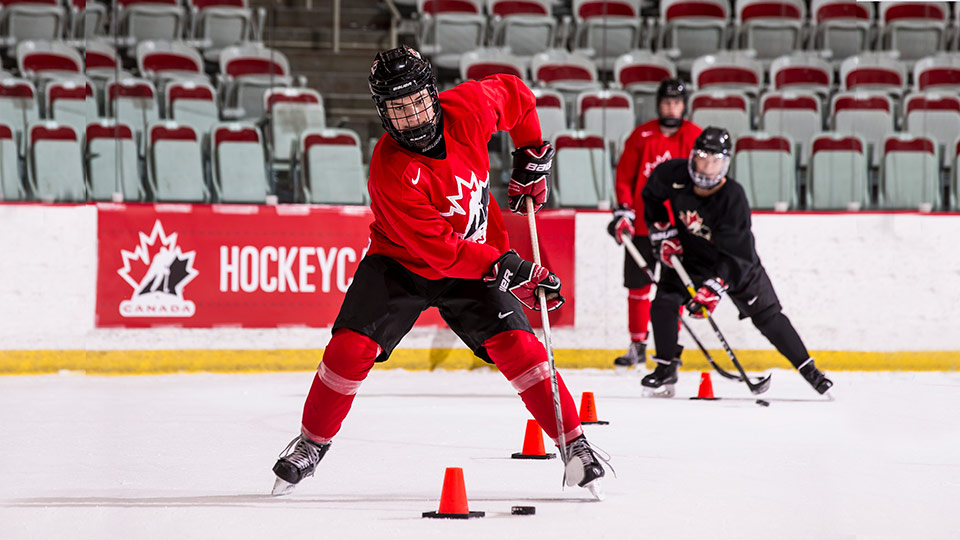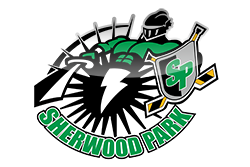Puck Control Skill Development
Puck control and stick-handling skills give hockey players the ability to have more fun playing hockey and better contribute to the success of their team. Over 80% of the game is played in the offensive or defensives zones, so players need to be able to handle the puck in small areas.
Puck control practice needs to be done in progression
- If you cannot do it standing still, you cannot do it moving
- If you cannot do it moving, you cannot do it to beat an opponent

When learning puck control...
- Keep an emphasis on range of motion, creativity and agility
- Every practice session should include some range of motion and agility
- Learn skating first, then introduce the puck, then add other player(s) where appropriate
- Use drills that simulate game situations as much as possible
Developing puck control
Work on puck-control basics every practice. Use drills to teach and reinforce through repetition. Mimic game action as realistically as possible, progressing from skating to skating with a puck and finally, puck control moves to beat an opponent.
- Small-area skills – Over 80% of hockey games are played in the offensive or defensive zones, so players must be able to handle the puck in small areas.
- Lanes – Provides an opportunity for lots of players moving, and multiple repetitions.
- Agility – Quickness, acceleration and lateral movement with the puck are the most important puck-handling skills.
- Puck protection – Keeping the puck once a player has it is the key to puck possession and generating scoring chances.
- Creativity – Players need to be able to think and react without being told what to do, when to do it and how to do it.
- Stations – Provide a great opportunity to work on puck control, while involving multiple players. Stations ensure players are kept moving and time with the puck on their sticks is maximized.
Specialized Puck Control Skills
Videos Courtesy of National Skill Development Association
- Detailed Hand Positioning on Stick
- Stickhandling Zones
- Passing Fundamentals
- Forward/Backward Passes
- Board Passes
- Passing in Motion
- One-Touch Passing Fundamentals
- Picking Up Rimmed Pucks
- Picking Up Bad Passes With Your Feet
- Picking Up A Hard Backhand Pass
- Putting Pucks Through Your Feet
- Catching Pucks With Your Feet
